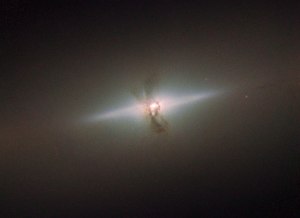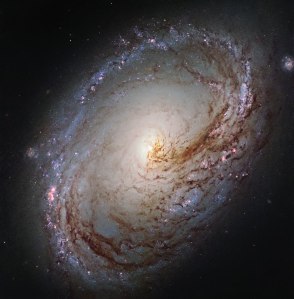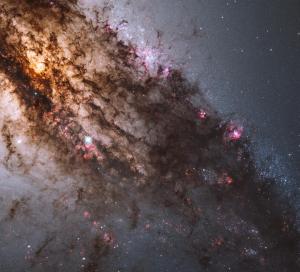
Revealing the youthful glow of blue star clusters and a dusty core hidden from view
Space news (astrophysics: giant elliptical galaxies; Centaurus A) – 11 million light-years from Earth toward the constellation Centaurus (NGC 5128) –
The closest galaxy to Earth with an active nucleus containing a supermassive black hole that ejects jets of high-speed, extremely energetic particles into space, the giant elliptical island universe Centaurus A’s (NGC 5128) a nearby laboratory in which astronomers test present theories.
The stunning Hubble Space Telescope image of Centaurus A (above) reveals a scene resembling cosmic clouds on a stormy day. Dark lanes of gas and dust crisscross its warped disk, revealing the youthful glow of blue star clusters, and red patches indicating shockwaves from a recent merger with a spiral galaxy. Shockwaves that cause hydrogen gas clouds to contract, starting the process of new star formation.
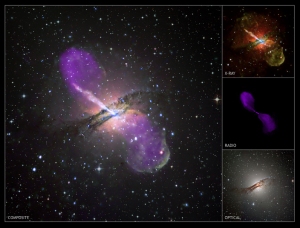
The startling composite image of Centaurus A above combines X-ray data from NASA’s Chandra Observatory, optical data from the European Southern Observatory’s Very Large Telescope, and the National Radio Astronomy Observatory’s Very Large Array. The core of NGC 5128 is a mess of gas, dust, and stars in visible light, but X-rays and radio waves reveal a stunning jet of high-speed, extremely energetic particles emanating from its active nucleus.
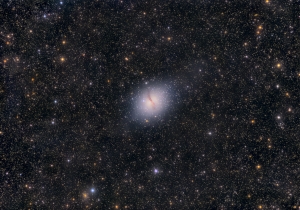
What could power such an event?
The power source for the relativistic jets observed streaming from the active galactic nucleus of Centaurus A’s a supermassive black hole with the estimated mass of over 10 million suns. Beaming out from the galactic nucleus toward the upper left, the high-speed jet travels nearly 13,000 light-years, while a shorter jet shoots from the core in the opposing direction. Astronomers think the source of the chaos in active galaxy Centaurus A’s the noted collision with a spiral galaxy about 100 million years ago.
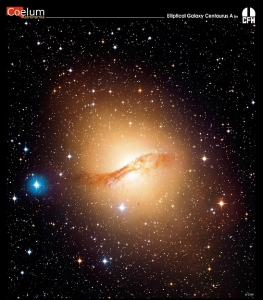
The amazing high-energy, extremely-fast, 30,000 light-year-long particle jet is the most striking feature in the false-color X-ray image taken by the Chandra Observatory. Beaming upward toward the left corner of the image, the relativistic jet seems to blast from the core of Centaurus A. A core containing an active, monster black hole pulling nearby matter into the center of its gravity well. An unknown realm mankind dreams about visiting one day.
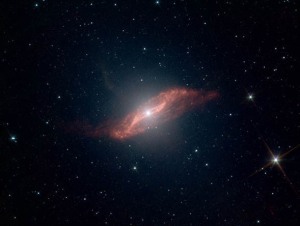
You can learn more about supermassive black holes here.
Take the space journey of NASA.
Discover the Chandra X-ray Observatory.
Learn more about the space voyage of the Hubble Space Telescope here.
Learn more about the European Southern Observatory’s Very Large Telescope.
Discover the National Radio Astronomy Observatory’s Very Large Array.
Learn more about elliptical galaxy Centaurus A here.
Read about and witness the spectacular shockwave of a supernova in visible light for the first time.
Learn more about the next-generation planet hunter TESS, the Transiting Exoplanet Survey Satellite.



